ZUK Z2 Pro, One Plus Three, Huawei P9, and Xiaomi 5 have their own congregations about who is the strongest in China, but the best domestic camera will be born in it. I am afraid there is no objection. Let the proofs come out now:

The flagship camera showdown has long since become a Sony sensor's infighting. In the previous year, "mixed in" one plus two OV sensors. This year, "mixed in" is using the ISOCELL ZUK Z2 Pro (of course, part of the Samsung series are ISOCELL). The commonality of these two dissimilarities is the large pixel + optical image stabilization, which can not help but let thousands of friends fantasize about its night performance.
The core of mobile phone photography is the camera experience and imaging effects. The main impacts are:
Speed , including focusing speed, shutter response, imaging speed;
The rate of filming, the probability of hand shaking and filming;
Automatic degree , can identify large light difference and low light scene, automatically trigger HDR and night scene mode;
Ease of use , whether the frame has delay/smear/drop frame/noise full screen, but the priority is not as high as the first three.
The imaging effects mainly include:
White balance and photometry , in many scenes such as daylight/light/weak light and extremely low light, whether the white balance (screen color wind direction) and the degree of lightness and darkness can approach the naked eye;
Discrimination and power can be roughly understood as sharpness. At the same time, the sharpness, detail and naturalness of the picture can be taken into consideration.
Tolerance , that is , the ability to simultaneously show the details of the shade, for the mobile phone, this is basically equivalent to whether the HDR effect is natural and harmonious, whether there is ghosting, white balance deviation and the decline of resolution and other issues after the synthesis;
The remaining assessments include noise control, color saturation (the closer to the naked eye the better, but Samsung and Huawei will be able to increase some of the recent, in order to please the user's eye), lens quality (including edge deterioration control, anti-glare, atomization Control, wide-angle and pillow-type distortion control, etc.) and many other things.
Although everyone's requirements for the photo experience are almost the same, the proportion of different items for imaging is completely different for different users: for example, the number of Mao who likes to enlarge photo scans will definitely put the power of resolution first. And the proportion is very high; the circle of friends in the sun has a special focus on latitude, white balance, saturation and other items, but the demand for resolution is not high. Therefore, the comparison will be based on different project segments, and everyone will focus on understanding what they care about.
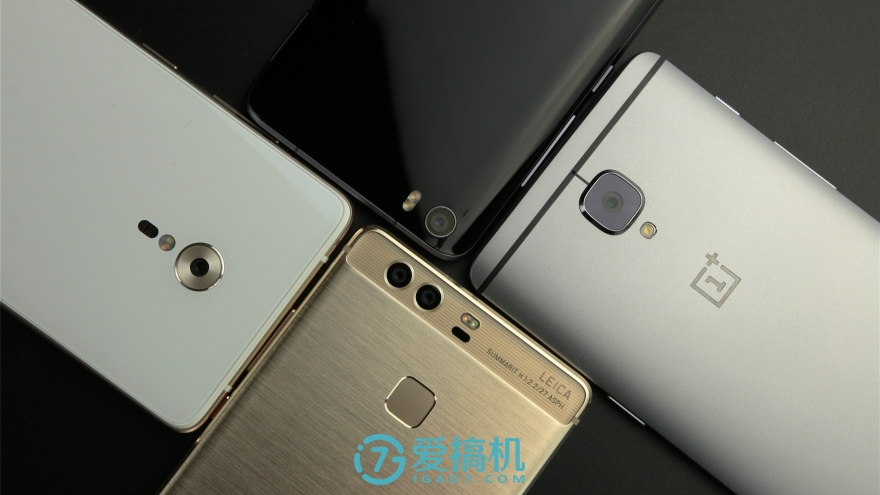
Focusing speed & success rate: ZUK Z2 Pro's speed and focusing success rate are relatively high. Prior to the previous version update, manual metering was easy to over-exposure problems. After the update, a lot of problems were corrected; Huawei P9 did not have phase focus, limit The focus speed is slightly slower, but the focus speed and success rate after wins are stable; the millet 5 and one plus 3 focus speeds perform well, but the possibility of defocusing under very low light is slightly higher than the other two machines.
Shutter Response & Imaging Speed ​​& Shutter Rate: The shutter speed and imaging speed of the 4 units in the default mode are very fast. However, in terms of chip rate, the Huawei P9 without optical image stabilization will suffer a lot of serious degradation after the deterioration of light, and users will have to work hard to stabilize the machine.
HDR/night scene processing speed : One plus 3 QH mode (multi-frame synthesis to optimize imaging without increasing the number of pixels) and HDR mode are all put into the background processing, there is almost no waiting time, after taking 8 or 9 consecutive shots, it will prompt that Processing is now the closest HDR experience to Samsung's Mac; P9 and Xiaomi 5's processing speed is quite satisfactory; Z2 Pro's processing speed is close to the normal flagship, but HDR mode will make the foreground appear nearly half a second of Caton, the user experience is not That's great.
Automaticity : Xiaomi 5 has automatic HDR and automatic night scene, but the HDR algorithm is still a slot for many years and its availability is not high; Huawei P9 night scene mode will automatically trigger with an independent HDR switch, but the default proofs will have a slight HDR processing. They are all types that do not use user management; One Plus 3 and ZUK Z2 Pro are types that have an automatic HDR without night mode. The latter is just proofs straight out of the night, but the one-plus-three QH mode is an enhanced mode that can be used day and night. It is well worth the constant opening, but it cannot be turned on simultaneously with the automatic HDR mode. This is unfortunate.
Framing: Usually we will not mention the flagship camera viewfinder screen, because they are indeed relatively small. However, the ZK Z2 Pro's photo viewing tolerance is too low, and the dark part is very easy to black. In addition, the original metering of the machine is dark and the experience is not very good.
Millet 5 and 1 plus 3 are common 28mm equivalent focal lengths (a plus 3 exif information is estimated to be different from a normal machine); Huawei P9 shows 27mm; ZUK Z2 Pro has a 4.22mm focal length, but the sensor size Unknown, cannot calculate the equivalent focal length.
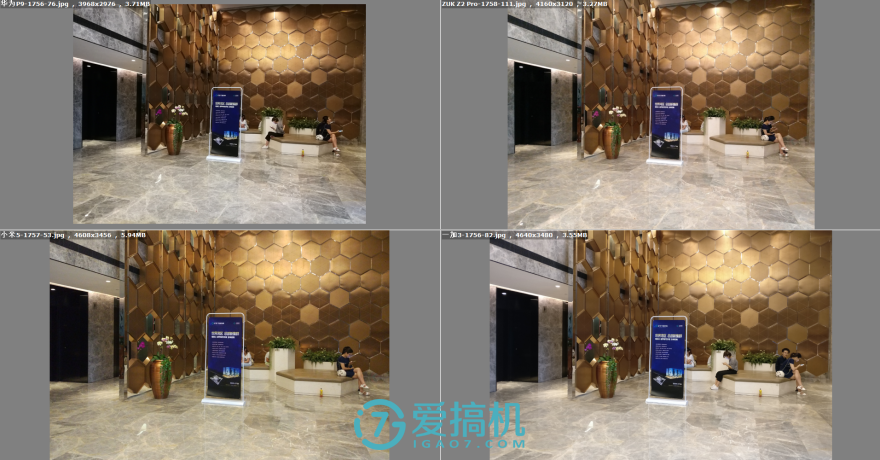
Samples are equally enlarged. The difference in size between 1200, 1300, and 16 million pixels is slightly smaller than we thought, but the wide-angle/field-of-view range of several machines is quite different: P9 and ZUK Z2 Pro have similar business scopes. It's bigger than Xiaomi 5 and 1 plus 3.
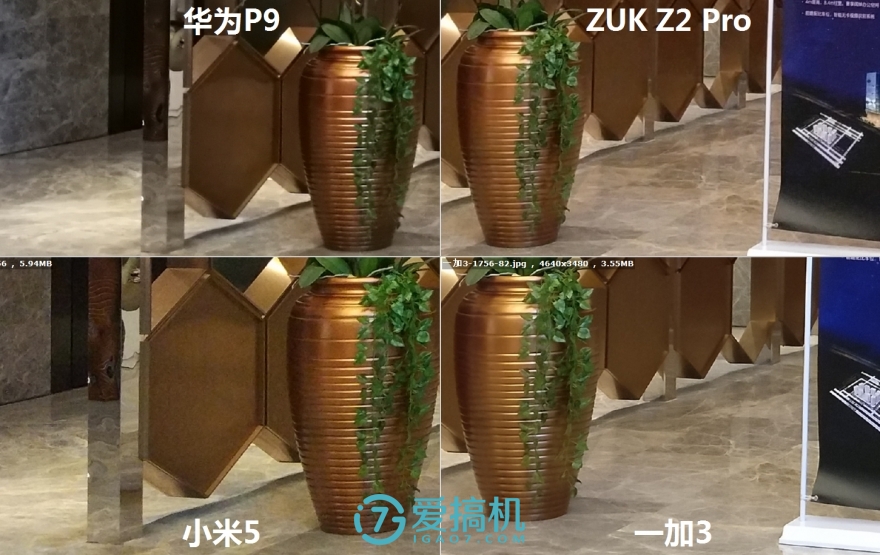
The same vase is magnified, the P9 is smaller, the ZUK Z2 Pro is bigger, and the Xiaomi 5 and the 1 plus 3 are bigger than ZUK. It is easy to predict that P9's power of discrimination will be weaker than that of ZUK Z2 Pro, and they will be weaker than one plus three and five.
 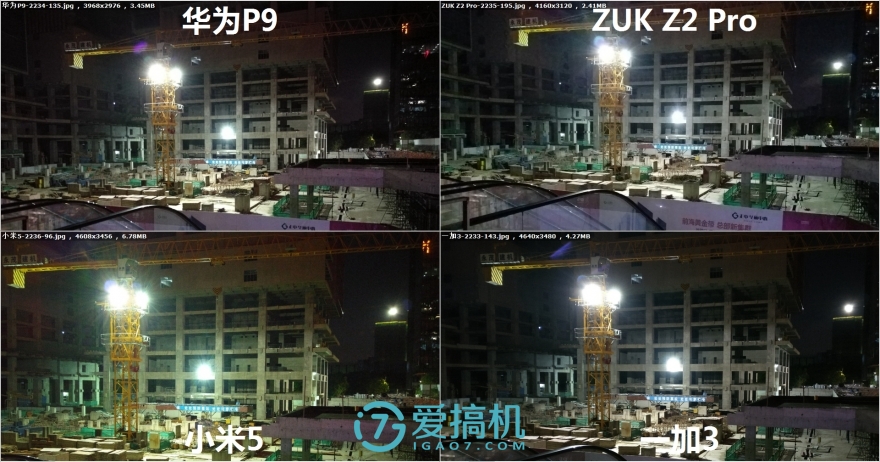
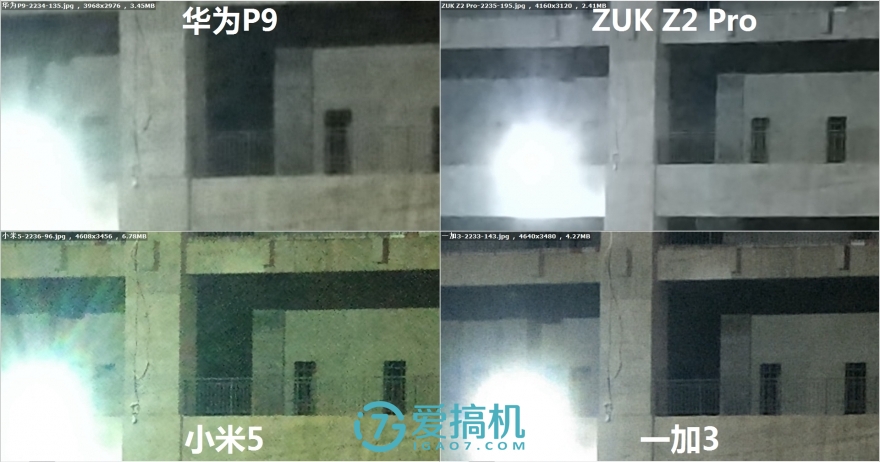
In terms of anti-glare power (in this case, the smaller the light coverage is, the better), they are all better, except that millet 5 is slightly worse, and other machines perform very close. There will be some ghosting and flooding in front of the four machine strong light sources, but they are all lighter and easier to avoid.
PS: Click on the picture to see the original image of the panorama proofs
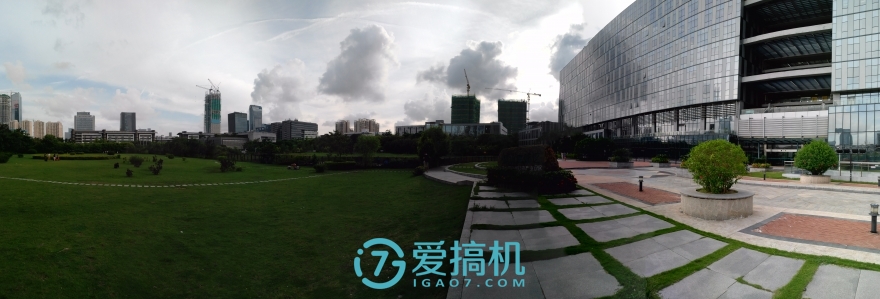
ZUK Z2 Pro panorama proofs

Huawei P9 panorama proofs

Millet 5 panoramic proofs

One plus three panorama proofs (The proofs were compressed because they were too large to upload, and the horizontal size was 9000 pixels)
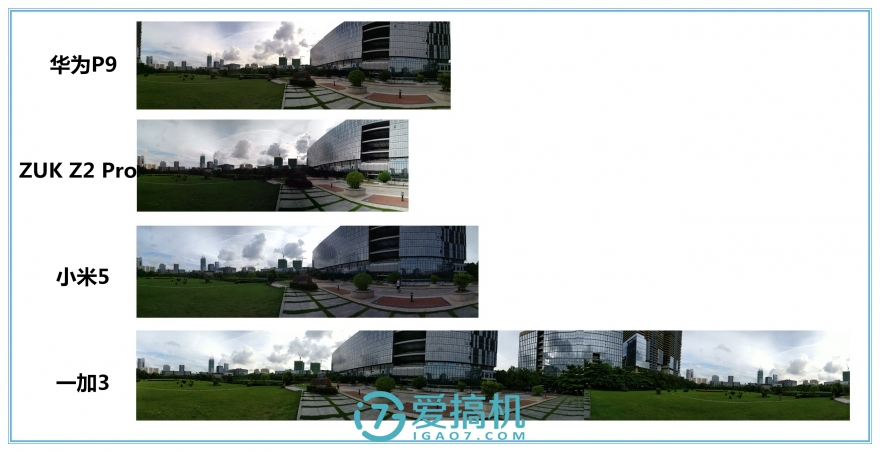
Panoramic mode viewfinder range, and picture distortion comparison (the same scene is longer, the smaller the compression distortion)

The availability of one plus three panoramic proofs is very high. Metering, white balance, bright and dark convergence and fineness are all very high, but the stitching marks are relatively more obvious.
The camera algorithm is still a weakness of millet, millet 5's panoramic mode although the viewing angle range, metering, stitching traces are more natural, but the white balance and pixels are too low, the availability is low;
Huawei P9 is slightly better. In addition to metering, the others are acceptable;
ZUK Z2 Pro's performance is not flattered, and the number of pixels and stitching traces are good, but the brightness and darkness of metering performance is poor, and the shooting angle is relatively general.
All machines are in automatic mode and the focus is in the middle, with detailed exif information in weak light proofs. Each machine in each scene will take more than 5 proofs and screen the best one as a representative.
PS: Click on the image to see a larger image
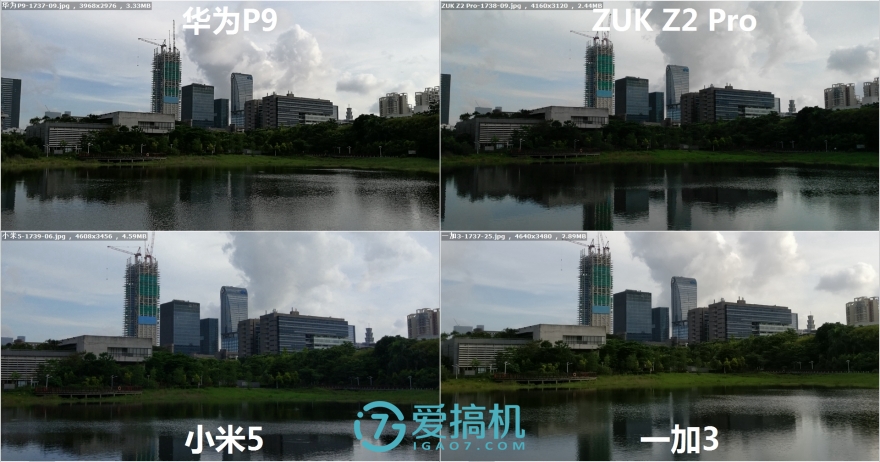
scene 1
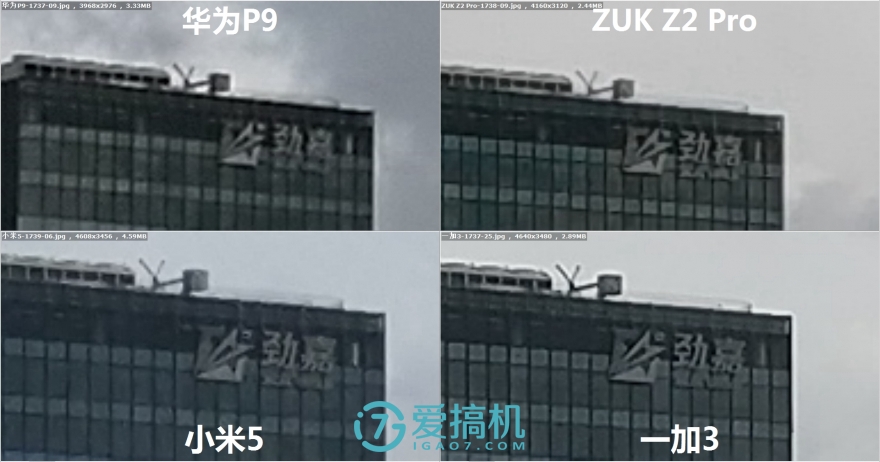
Scene 1 Central Zoom
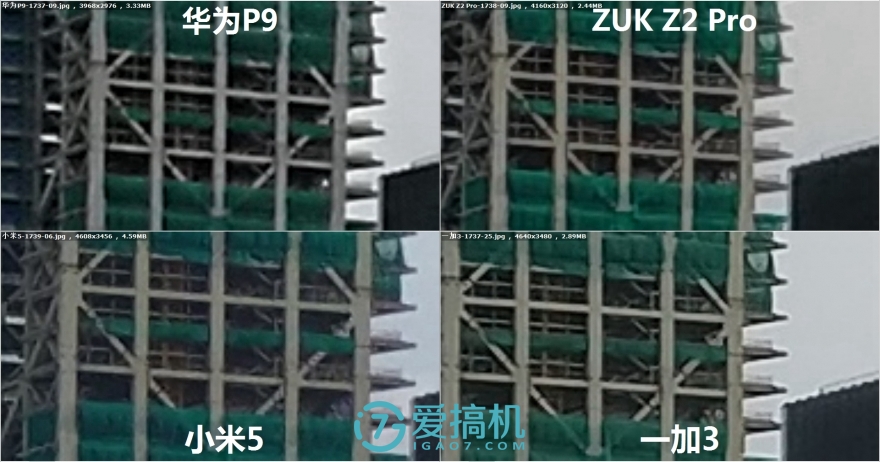
Scene 1 Center Left Zoom
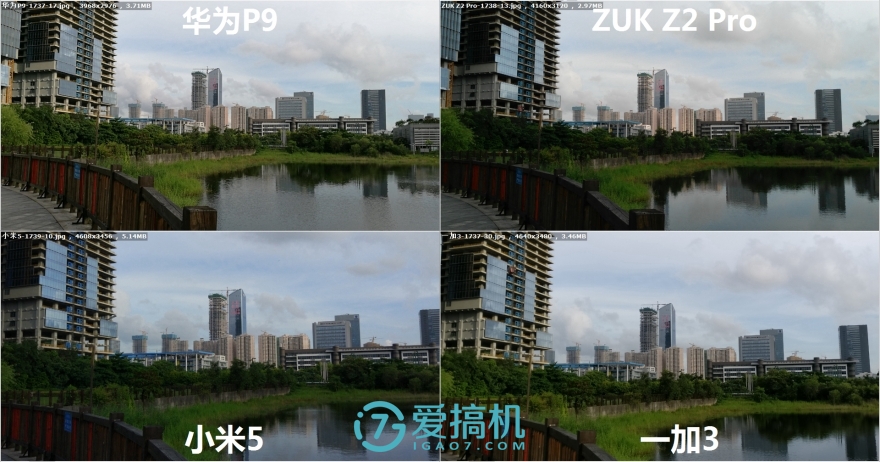
Scene 2
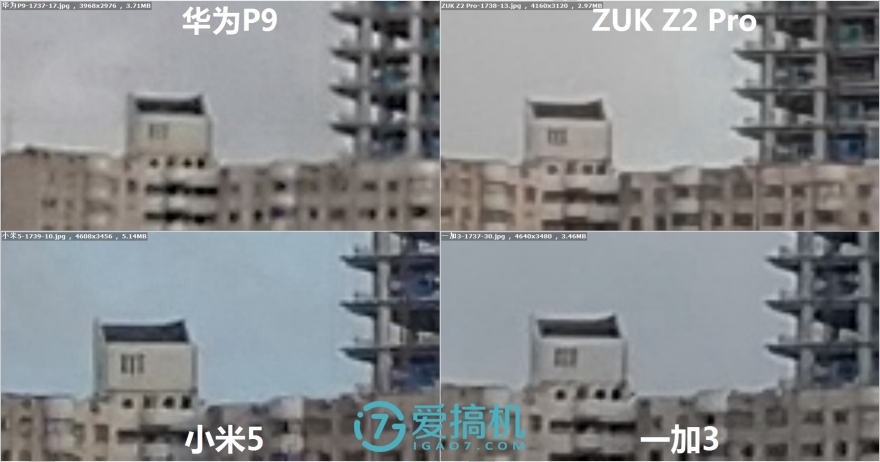
Scene 2 Central Zoom
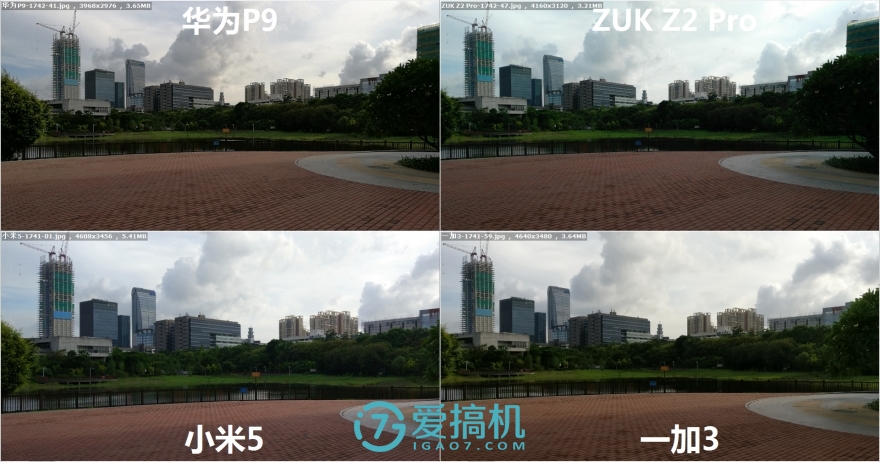
Scene 3
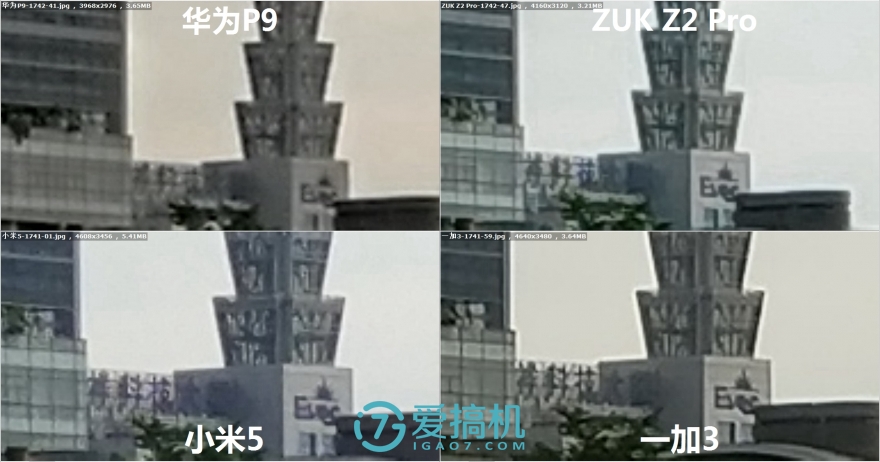
Scene 3 Central Zoom
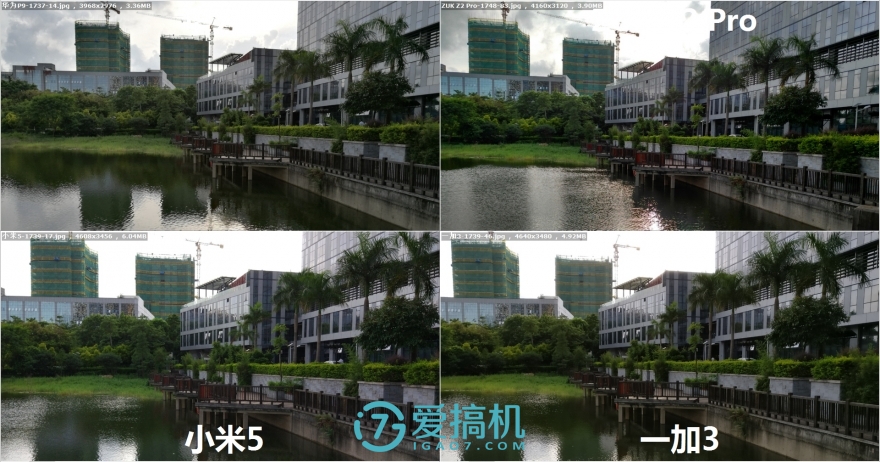
Scene 4
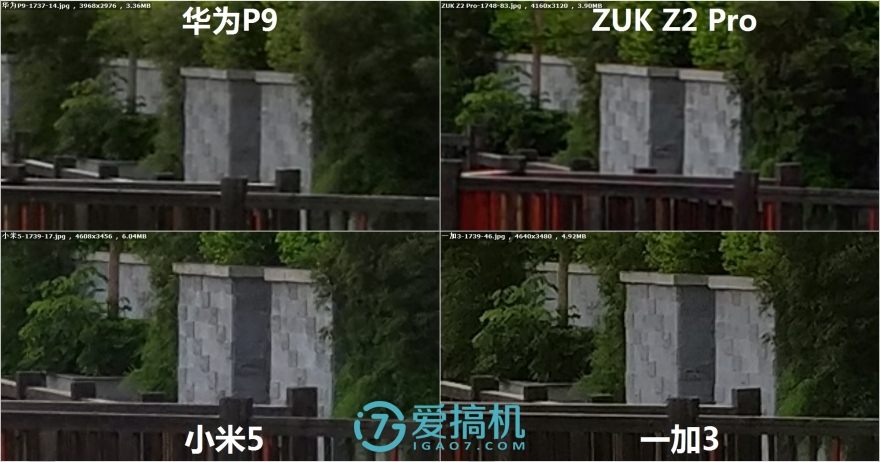
Scene 4 Central Zoom
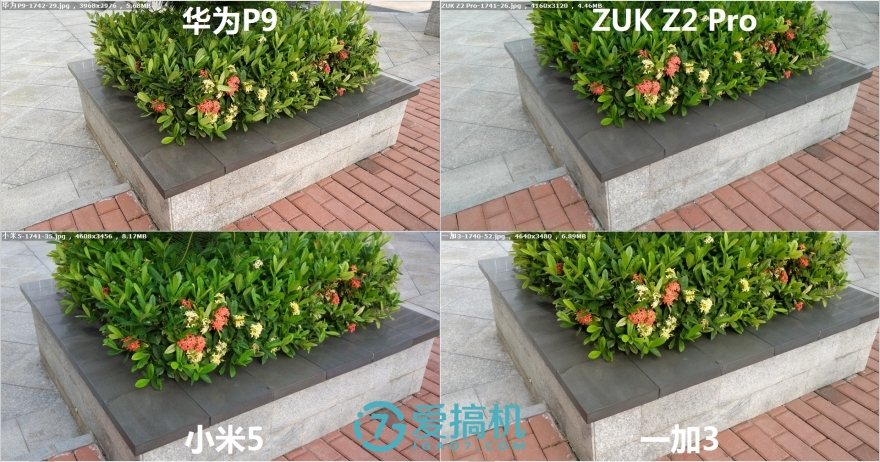
Scene 5
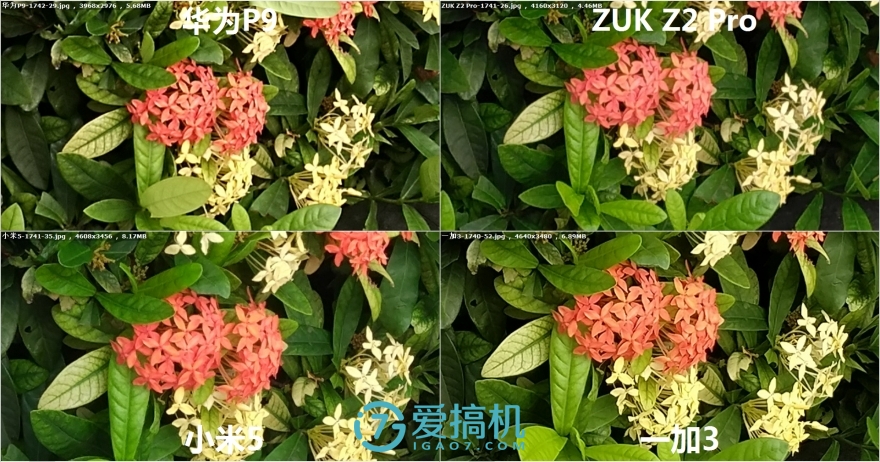
Scene 5 Central Zoom
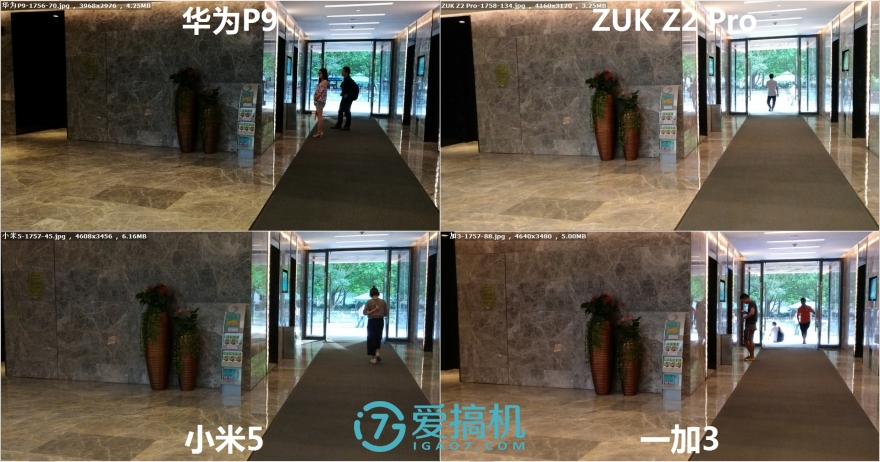
Scene 6
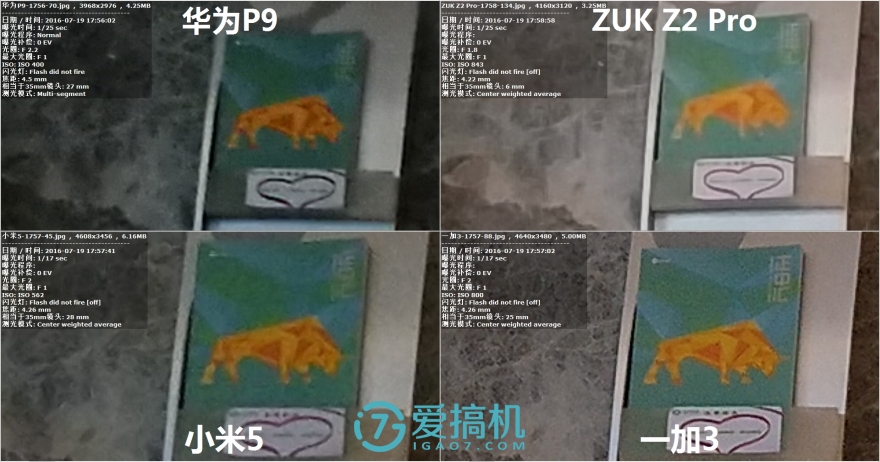
Scene 6 Central Zoom

Scene 6 Center Left Zoom
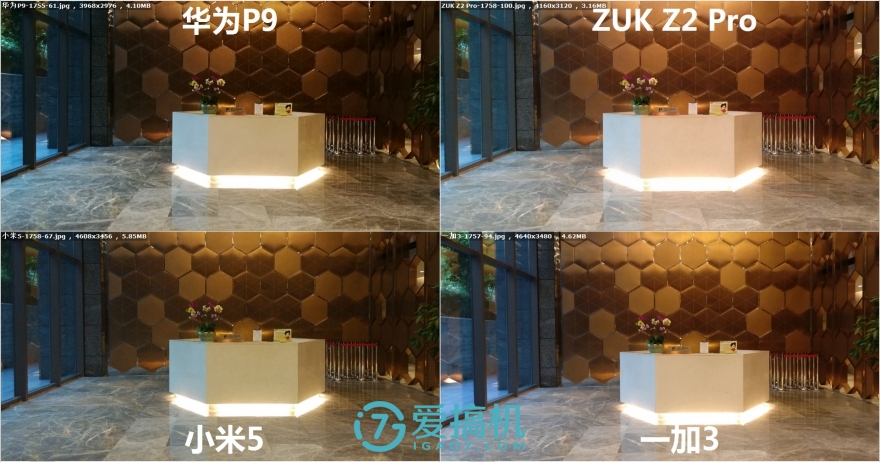
Scene 7
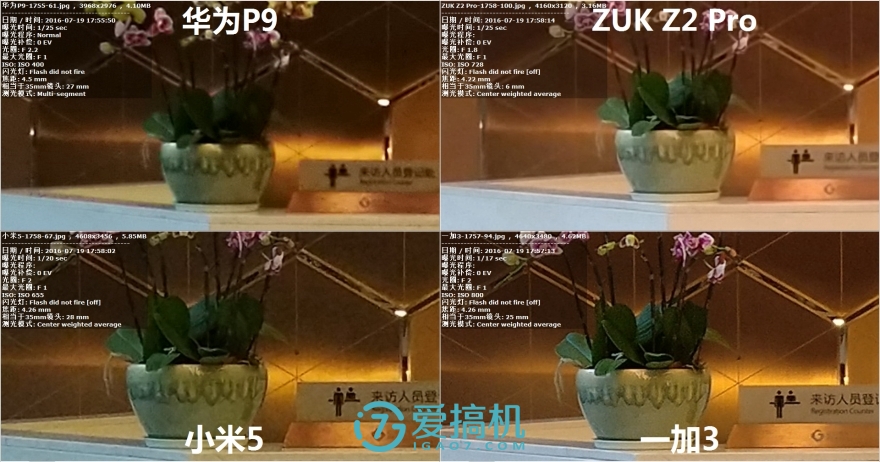
Scene 7 Central Zoom
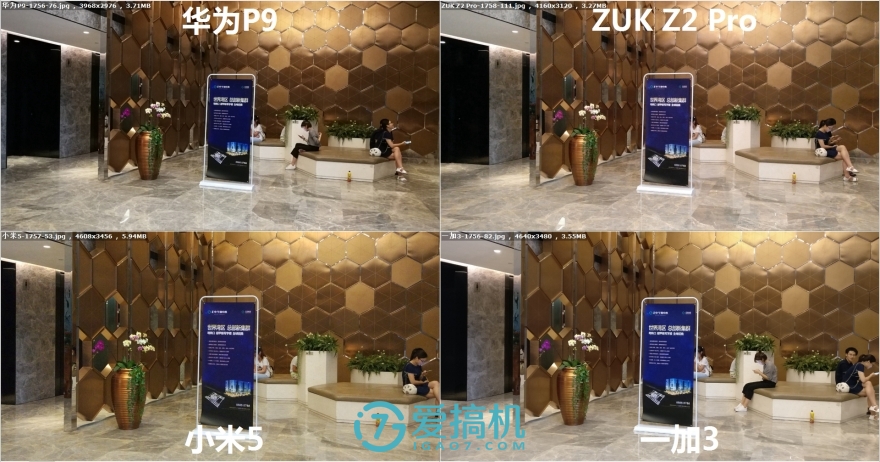
Scene 8

Scene 8 Central Zoom
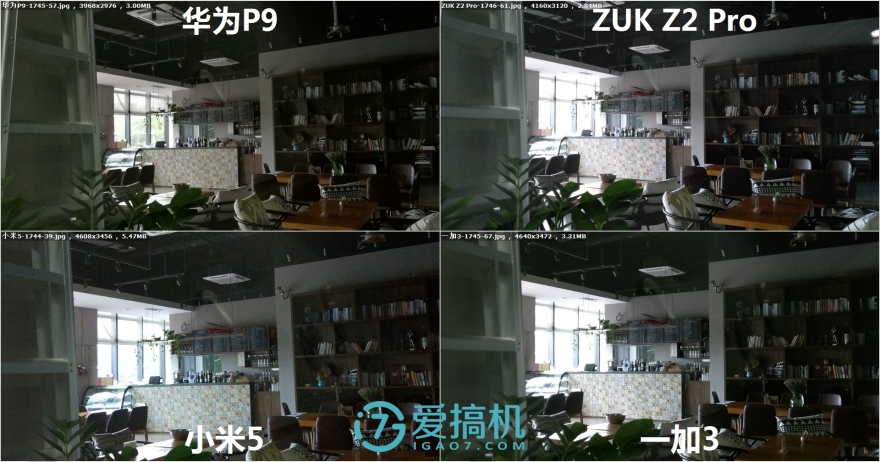
Scene 9
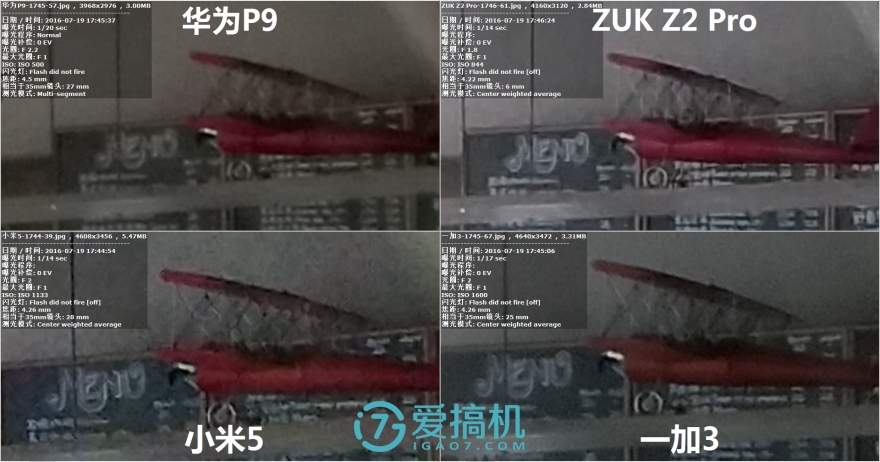
Scene 9 Center Zoom
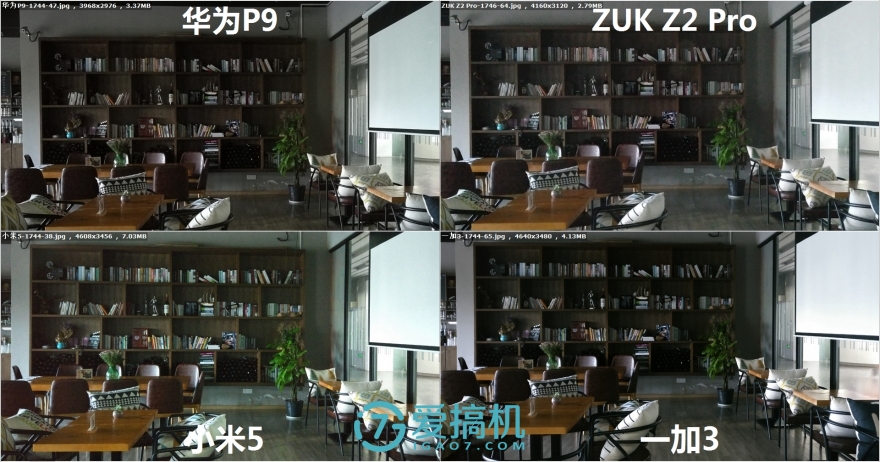
Scene 10

Scene 10 Central Zoom
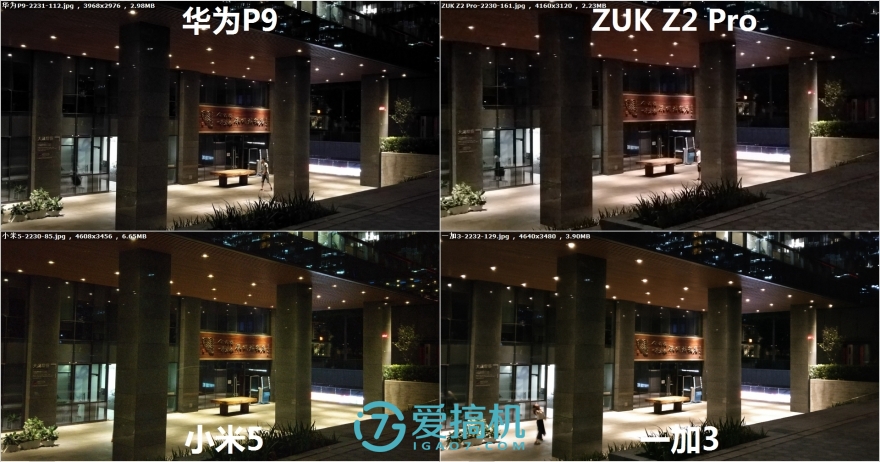
Scene 11
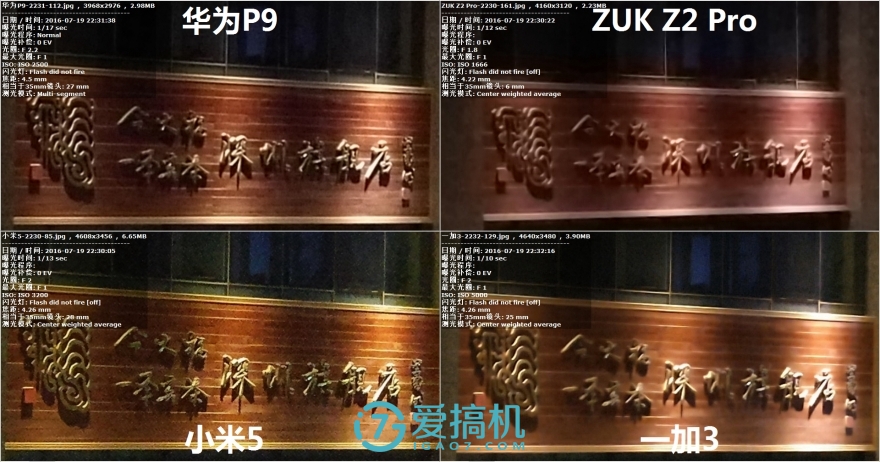
Scene 11 Central Zoom
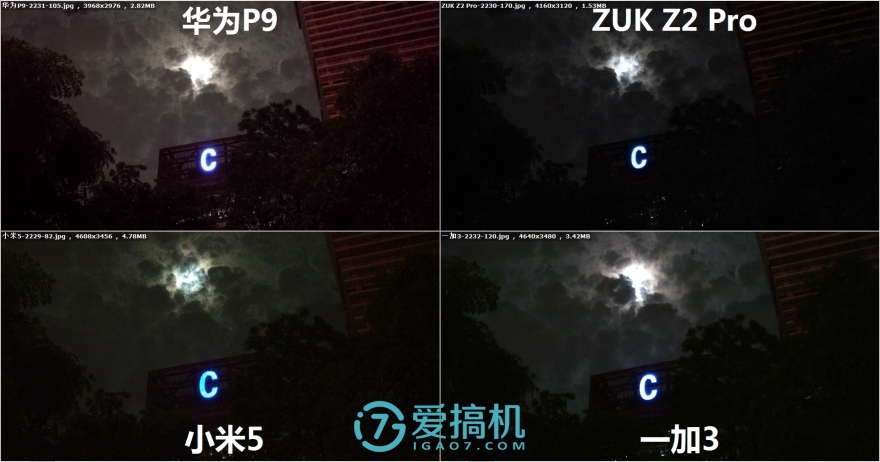
Scene 12
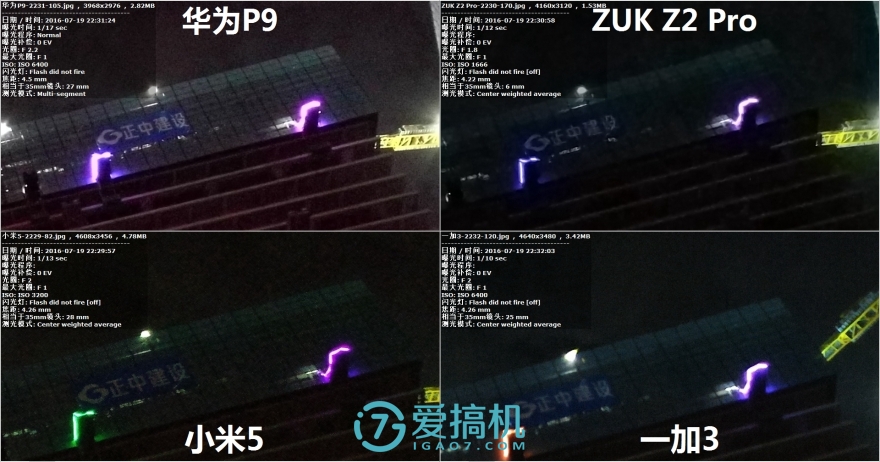
Scenario 12 upper right corner zoom

Scene 13

Scene 13 Above Center Zoom

Scene 13 Center Zoom
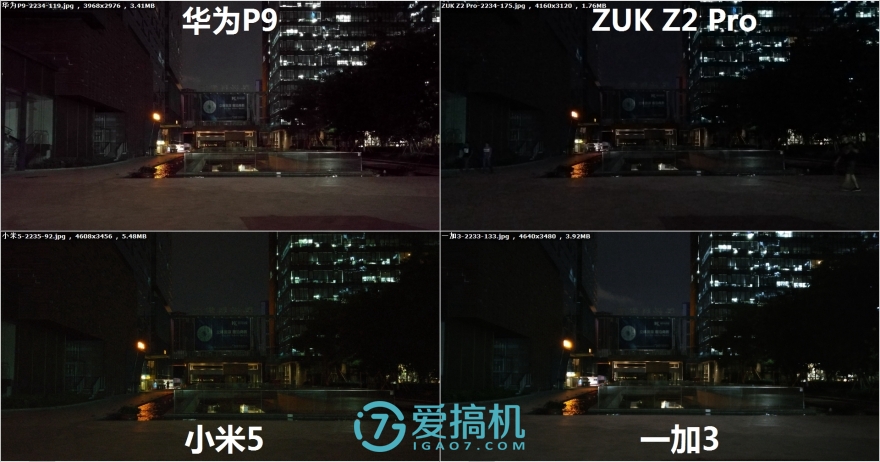
Scene 14

Scenario 14 Central zoom (In this scene, one plus three has been slightly out of focus, which is the only machine that cannot focus on many times)
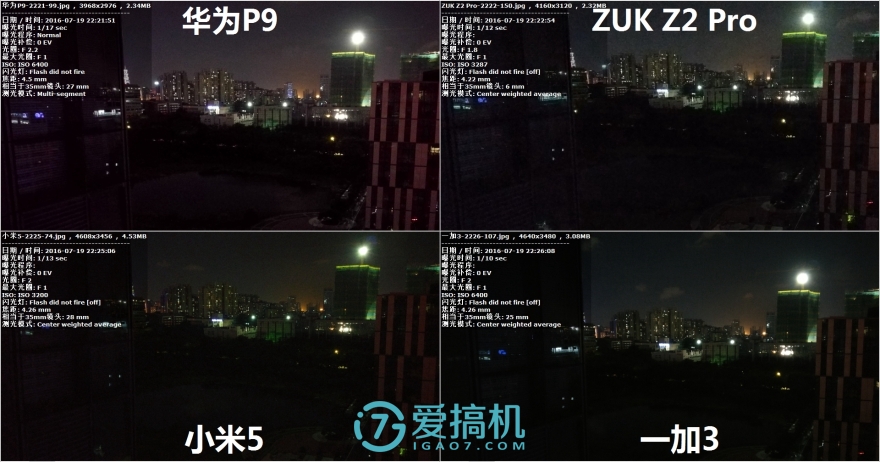
Scene 15
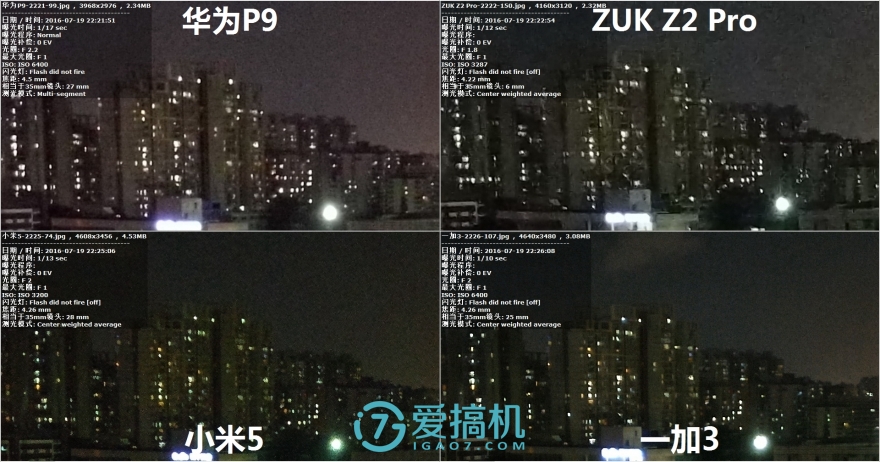
Scene 15 Center Zoom

Scene 15 below center zoom
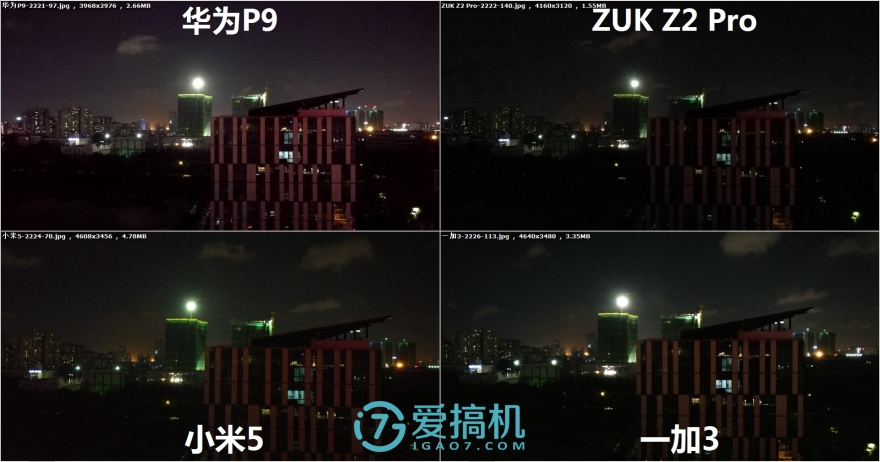
Scene 16
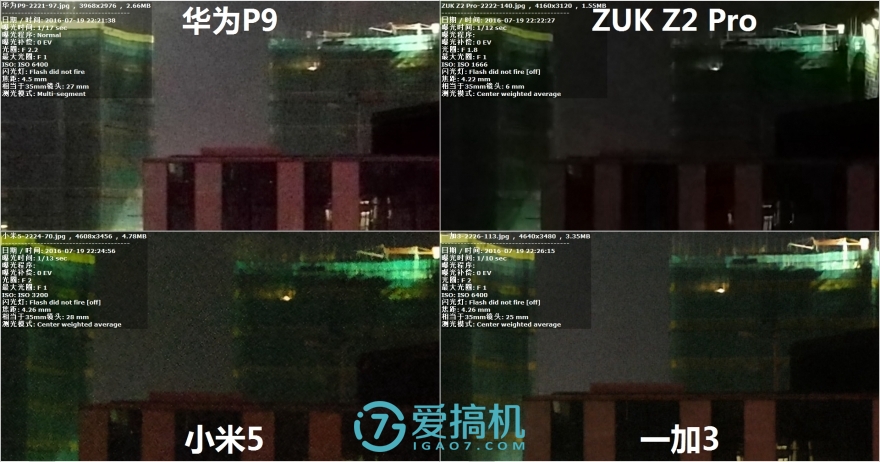
Scene 16 Central Zoom

The overall metering of Huawei P9 is dark, but it is slightly higher than the naked eye.
The ZUK Z2 Pro is rather special, its outdoor strong light metering is dark, and it is slightly higher in indoor and low light conditions;
Millet 5 overall metering is closer to the naked eye;
One plus three days and metering under the light is normal, under the weak light is slightly dark, biased similar to the iPhone.
White balanceOne plus three white balance accuracy and stability is slightly better, even if the white balance under low light is closer to the naked eye, the overall yellow-green color is slightly higher, but the amplitude is very slight;
Followed by ZUK Z2 Pro and Huawei P9, the former tends to have a slightly reddish undertone, and tends to have a bias toward blue-green under very weak light, and the hair color is more true; P9's yellowish warmer is slightly more obvious;
And the white balance characteristic of Xiaomi 5 is very obvious. It is OK during the day, but as long as the light is dimmed, it is obviously and uniformly reddish, and it is far from the white balance.
Latitude & Saturation & ContrastHuawei P9's all-weather mandatory HDR will make it more tolerant;
The latitude of one plus 3 and one millet 5 of the sensor is essentially the same, but the more excellent one plus three of the HDR algorithm is more natural;
The ZUK Z2 Pro, which has the largest unit pixel size, should have the highest latitude, but the actual performance is not satisfactory, and the high-sensitivity saturation is significantly lower than other machines.
In terms of saturation and contrast, only the P9 has obvious traces of gamma curve and contrast. The picture difference will be higher than what the naked eye sees. The picture has a more transparent feel, but the dark part will be easier to black. In addition to smearing, one plus three noise reduction algorithms also provide traces of saturation, which will appear brighter under low light.
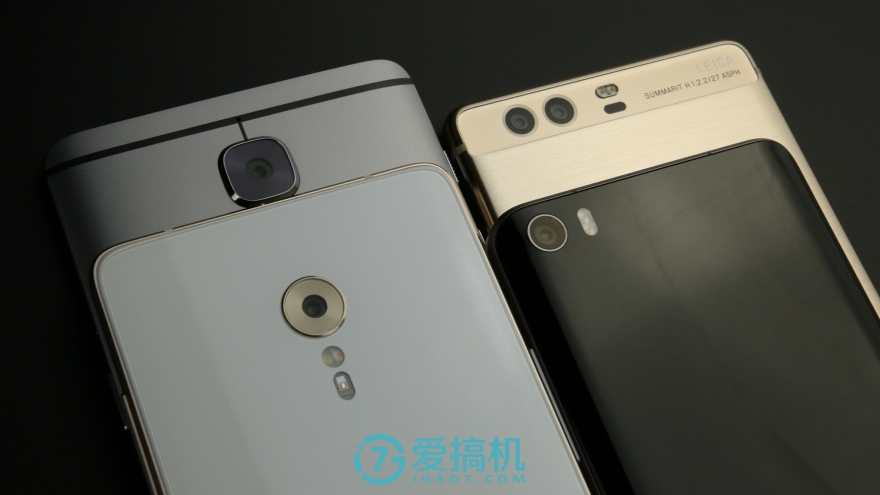
Noise control
The ZUK Z2 Pro's noise reduction algorithm and intensity are close to the music Max2, strong smear noise reduction under low light, the picture has always been very clean but therefore lost a lot of details, under low light will give people the illusion of not good focus;
At the other extreme is Xiaomi 5, which is fully dedicated to detail. The noise control is much better than it was a few months ago. But even more detailed, it is still the most obvious among several domestic flagships;
The strategy of Huawei P9 and One Plus Three is to be “neutralâ€, but one plus three noise processing is more fine, and when the light is good, there will be noise reduction (see smearing in the sky), and the details will remain excellent.
Huawei P9's noise control is obviously one step worse than one plus three, but it is also one of the best domestic ones.
DistinguishabilityIn addition to the extremely low light, the Huawei P9 can win the powerful ZUK Z2 Pro. The resolution power falls far behind. This is probably the so-called intentional powerlessness.
Although the ZUK Z2 Pro is only a little bit higher than the Huawei P9, the ultimate resolution is far better than expected.
One plus three may be due to algorithmic noise reduction throughout the entire process, some of the sharpness and details are lost, and the ultimate analysis power is to lose some 5 millet, but the amplitude is very small.
After the light is getting worse:
Light and ordinary low light have become almost one plus three worlds. The noise smears and sharpens retains a lot of details. The power of discrimination is all the better than Xiaomi 5, and the picture is very clean.
After millet 5 is Huawei P9, the light and ordinary weak light has always suffered due to pixel differences, but very weak light performance is tough.
The large pixel + optical image stabilization ZUK Z2 Pro, this should be the strongest night shooting, but because of the mediocre algorithm and end of the package, it is a pity.
Cable Gland,Power Cable,Cable Clips,Cable Organizer
Changshu Herun Import & Export Co.,Ltd , https://www.herunchina.com